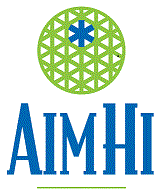AJC Source Article | Comments Courtesy of Matt Zavadsky
There is A LOT to unpack about this article.
Yamil used to be a reporter in the MedStar service area, and she knows a fair amount about effective and quality EMS service delivery. She, and the AJC, have been doing a series of articles about the Atlanta area EMS system.
Many of us in EMS have advocated for quality and performance measures that can be universally applied to EMS agencies and their providers. Almost every study that has researched the impact of ambulance response times on patient outcome has demonstrated that any response time greater than 5 minutes has virtually no impact on patient outcomes (see references below). And, only about 2% of EMS calls could benefit from a response time within 5 minutes (e.g. cardiac arrest).
Therefore, it is a logical presumption that response time is not a measure of clinical quality, but it may be a measure of patient experience (which should be measured separate from clinical quality).
This article seems to highlight the need for communities to develop, and hold EMS agencies accountable for, performance measures that truly matter, and represent a quality EMS system.
References:
Paramedic response time: does it affect patient survival?
https://www.ncbi.nlm.nih.gov/pubmed/15995089
Lack of association between prehospital response times and patient outcomes.
https://www.ncbi.nlm.nih.gov/pubmed/19731155
Emergency medical services advanced life support response times: lots of heat, little light.
https://www.ncbi.nlm.nih.gov/pubmed/11927458
Eight minutes or less: does the ambulance response time guideline impact trauma patient outcome?
https://www.ncbi.nlm.nih.gov/pubmed/12217471
----------------------------
Proposal falls short of needed EMS reforms, critics say
State urged to require that life-threatening emergency calls be a priority
By Yamil Berard, The Atlanta Journal-Constitution
Nov 27, 2019

Some of Georgia’s most influential leaders in emergency medical services, as well as patient advocates, are pushing for more dramatic reforms to a state proposal affecting the hiring of ambulance providers.
The proposal, expected to take effect Dec. 9, is a first step to EMS reforms that are long overdue, said Bud Owens, chairman of an advisory committee of state EMS leaders that makes recommendations to the state.
But he and others also believe the revision is not enough to block potential abuse in the hiring of providers and to ensure the standard of care provided by emergency medical services. They say that the state needs to provide better oversight and develop standards to hold providers accountable.
The proposal is the state’s response to concerns by the groups that ambulance providers and their representatives have had undue influence on state regional EMS councils, leading to decisions that were not in the public interest.
Under its key provisions, the proposal will require the councils, which evaluate and hire EMS and ambulance providers, to conduct business in public, as stipulated by the Georgia Open Meetings laws. The revision also will require council members to disclose any potential conflicts of interest, and refrain from voting on contracts when those interests could compromise their decisions.
“I believe we all have to conduct our business appropriately to make sure we’re making decisions in the best interest of those we serve,” said Owens, who is also a county commissioner in Gordon County, in northwest Georgia. “If we can’t handle the business end of it, I don’t think we should be handling the patient care.”
Those changes won’t be enough, though, to ensure that those with life-threatening emergencies receive they care they need, other critics say.
Across the state, too often ambulances have been slow to arrive. Because of the delayed response or substandard care, some critically ill Georgians have died, said Elmer Stancil, an Atlanta-based attorney who represents the Georgia Ambulance Transparency Project, a group formed last year to push for reforms in EMS.
Those losses “illustrate the profound consequences and real human devastation when the state neglects its duty to ensure quality emergency medical care,’’ Stancil wrote in a Nov. 6 email to a lawmaker and state officials, which was obtained by the Atlanta Journal-Constitution under the Georgia Open Records Act.
“That’s really what’s at stake with this rule revision: the lives and welfare of real Georgians,” Stancil wrote.
In June, an AJC examination found that state has operated for years with vague standards and weak oversight. In most cases, the Georgia Department of Public Health, which oversees the state’s EMS system and ambulance providers, leaves it up to ambulance company officials to determine the quality of care provided by their medics and to investigate complaints.
It also leaves it to regional councils to recommend ambulance providers. But the department does not share with the councils, or the public, the reams of performance data it has on ambulance providers, based on detailed patient care reports and response time. As a result, many hiring decisions are the result of recommendations that have no substantive data to back them.
Even EMS leaders say they have tried for years to wrestle data from the state to no avail.
“I can’t review anybody if I don’t have the data as to what they’re doing,’’ said Courtney Terwilliger, EMS director in Emanuel County and a member of the state’s EMS advisory council. “The only people who have it is the state office of EMS, and they are notorious for not providing it.”
Continue Reading>


